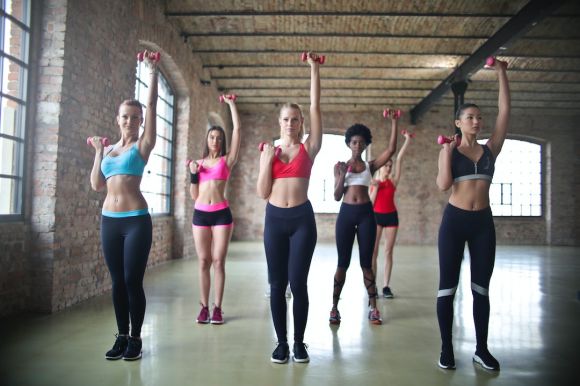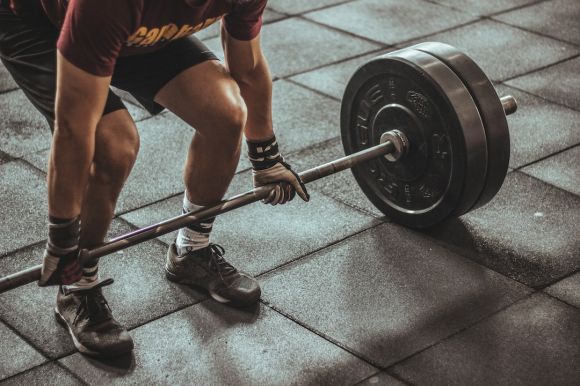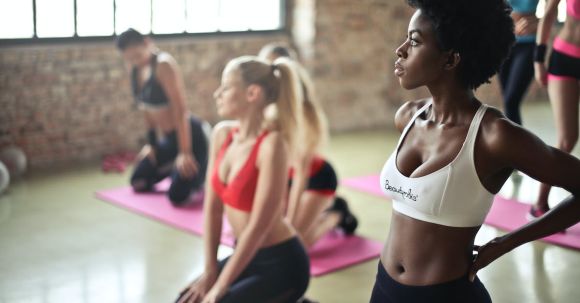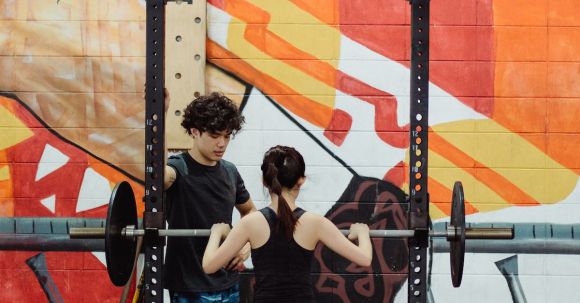Yoga has gained immense popularity in recent years, and for good reason. It is not just a physical exercise but also a holistic practice that combines movement, breath, and meditation. One of the key benefits of yoga is its ability to increase body awareness and mindfulness. In this article, we will explore how yoga can help you cultivate these qualities and enhance your overall well-being.
Blog Posts
Maintaining a strong immune system is crucial for overall health and well-being. While there are various ways to boost your immune system, engaging in regular cardiovascular exercises can be a particularly effective method. Cardiovascular exercises not only help improve your cardiovascular health but also have a positive impact on your immune system. In this article, we will explore the benefits of cardiovascular exercises for strengthening your immune system and provide some useful tips on incorporating these exercises into your daily routine.
Enhanced Blood Circulation
One of the key benefits of cardiovascular exercises is improved blood circulation throughout your body. When you engage in activities such as running, cycling, or swimming, your heart rate increases, pumping more oxygen-rich blood to your organs and tissues. This increased blood flow allows your immune cells to travel more efficiently, enhancing their ability to identify and eliminate pathogens.Reduced Chronic Inflammation
Chronic inflammation is known to weaken the immune system and increase the risk of various diseases. Regular cardiovascular exercises can help reduce chronic inflammation by lowering the levels of pro-inflammatory markers in your body. These exercises stimulate the production of anti-inflammatory molecules, which can counteract the negative effects of chronic inflammation and strengthen your immune system.Improved Stress Management
Stress has a significant impact on our immune system, making us more susceptible to illnesses. Engaging in cardiovascular exercises can be an excellent way to manage stress levels effectively. When you exercise, your brain releases endorphins, which are natural mood boosters. These endorphins help reduce stress and anxiety, promoting a more robust immune system.Increased Production of Antibodies
Cardiovascular exercises also play a role in boosting the production of antibodies, which are proteins that help fight off infections. Regular exercise stimulates the release of immune cells called B cells, which are responsible for producing antibodies. By increasing the production of antibodies, cardiovascular exercises can help strengthen your immune system's ability to defend against pathogens.Tips for Incorporating Cardiovascular Exercises into Your Routine
Now that we understand the benefits of cardiovascular exercises for strengthening the immune system, let's explore some practical tips for incorporating these exercises into your daily routine: 1. Start Slowly: If you are new to cardiovascular exercises, it is essential to start slowly and gradually increase the intensity and duration of your workouts. This approach will help prevent injuries and allow your body to adapt gradually. 2. Choose Activities You Enjoy: Find cardiovascular exercises that you enjoy doing to ensure consistency. Whether it's jogging, dancing, or playing a sport, engaging in activities you genuinely love will make it easier to stick to your exercise routine. 3. Set Realistic Goals: Set realistic goals for yourself, considering your current fitness level and lifestyle. By setting achievable targets, you will stay motivated and avoid feeling overwhelmed. 4. Mix It Up: Keep your cardiovascular exercise routine interesting by incorporating a variety of activities. This will not only prevent boredom but also challenge different muscle groups and enhance overall fitness. 5. Stay Hydrated: Remember to drink plenty of water before, during, and after your workouts to stay hydrated and support optimal immune function. In conclusion, regular cardiovascular exercises can be an effective way to strengthen your immune system. By enhancing blood circulation, reducing chronic inflammation, improving stress management, and increasing the production of antibodies, these exercises provide numerous benefits for your overall health. By incorporating cardiovascular exercises into your daily routine and following the tips mentioned above, you can take proactive steps towards boosting your immune system and maintaining optimal health.
Building muscles takes time and dedication, but there are certain strategies that can help you achieve your goals faster. Whether you are a beginner or have been hitting the gym for a while, these tips will help you maximize your muscle growth and get the results you desire.
1. Focus on Progressive Overload
Progressive overload is the key to building muscles faster. This means gradually increasing the demands on your muscles over time. You can do this by lifting heavier weights, doing more repetitions, or reducing rest periods between sets. By constantly challenging your muscles, you force them to adapt and grow stronger.2. Prioritize Compound Exercises
Compound exercises target multiple muscle groups at once and are highly effective for building muscles. Squats, deadlifts, bench presses, and pull-ups are some examples of compound exercises that should be a part of your workout routine. These exercises engage more muscles and allow you to lift heavier weights, which leads to greater muscle growth.3. Train with High Intensity
Intensity is crucial for stimulating muscle growth. Instead of going through the motions, push yourself to your limits during each workout. Lift weights that are challenging and aim to reach muscle failure within the desired rep range. By pushing your muscles to the brink, you create the stimulus necessary for growth.4. Optimize Your Nutrition
To build muscles faster, you need to fuel your body with the right nutrients. Make sure you are consuming enough protein, which is essential for muscle repair and growth. Aim for 1 to 1.5 grams of protein per pound of body weight. Include lean sources of protein such as chicken, fish, eggs, and tofu in your diet. Carbohydrates are also important as they provide the energy needed for intense workouts. Include complex carbohydrates like whole grains, fruits, and vegetables in your meals. Additionally, healthy fats like avocados, nuts, and olive oil support hormone production and aid in muscle recovery.5. Get Sufficient Rest and Recovery
Many people overlook the importance of rest and recovery in their muscle-building journey. Muscles grow during periods of rest, not during workouts. Make sure you are getting enough sleep, as it is during sleep that your body repairs and rebuilds muscle tissue. Aim for 7-9 hours of quality sleep each night. In addition to sleep, incorporate active recovery into your routine. This can include activities such as yoga, stretching, or light cardio. Active recovery promotes blood flow, reduces muscle soreness, and enhances overall recovery.6. Stay Consistent
Consistency is key when it comes to building muscles faster. Stick to your workout routine and nutrition plan consistently. Building muscles is a long-term process, and it requires patience and dedication. Set realistic goals and track your progress to stay motivated.7. Stay Hydrated
Proper hydration is essential for muscle growth. Water is involved in many processes in the body, including muscle protein synthesis. Dehydration can lead to decreased performance and hinder muscle growth. Aim to drink at least 8 cups of water per day, and more if you are active or live in a hot climate. In conclusion, Building muscles faster requires a combination of progressive overload, compound exercises, high-intensity training, optimal nutrition, rest and recovery, consistency, and hydration. By incorporating these strategies into your fitness routine, you can accelerate your muscle growth and achieve the results you desire. Remember, building muscles takes time, so be patient and stay committed to your goals.
In today's fast-paced world, finding the right balance between work, family, and personal well-being can be challenging. Many people struggle to maintain a healthy lifestyle and lose weight amidst their busy schedules. However, there is a solution that combines fitness, technology, and convenience - Fit on. This innovative fitness app is designed to help you find your rhythm and achieve your weight loss goals.
The Power of Rhythm
Rhythm plays a crucial role in our lives. From the beating of our hearts to the cycles of nature, rhythm is everywhere. When it comes to fitness and weight loss, finding your rhythm can make all the difference. Fit on understands the importance of rhythm and helps you establish a routine that works for you. By syncing your workouts with your natural rhythm, you can maximize your results and make the most of your time.Customized Workout Plans
One of the key features of Fit on is its ability to create customized workout plans tailored to your specific needs and goals. Whether you are a beginner looking to start your fitness journey or an experienced athlete seeking to take your workouts to the next level, Fit on has a plan for you. The app takes into consideration your fitness level, preferences, and available time to create a personalized plan that fits seamlessly into your lifestyle.Variety and Flexibility
One of the main reasons people struggle to stick to a fitness routine is boredom. Doing the same exercises over and over again can quickly become monotonous and demotivating. Fit on addresses this issue by offering a wide variety of workouts that keep you engaged and excited. From yoga and Pilates to HIIT and strength training, there is something for everyone. Moreover, Fit on allows you to choose the duration and intensity of your workouts, giving you the flexibility to fit exercise into even the busiest of schedules.Motivation and Accountability
Staying motivated and accountable is essential when it comes to achieving weight loss goals. Fit on understands this and provides the necessary tools to keep you on track. The app offers a range of features, including progress tracking, goal setting, and community support. By regularly monitoring your progress and setting achievable goals, you can stay motivated and see the results of your hard work. Additionally, Fit on's community feature allows you to connect with fellow fitness enthusiasts, share achievements, and seek advice, creating a sense of accountability and support.The Convenience of Technology
One of the biggest advantages of Fit on is its convenience. With just a smartphone or tablet, you can access a world of fitness right at your fingertips. No more commuting to the gym or scheduling your day around fitness classes. Fit on allows you to exercise whenever and wherever you want. Whether it's a quick workout during your lunch break or a full session in the comfort of your living room, Fit on gives you the freedom to prioritize your health without compromising on convenience.Conclusion: Finding Your Rhythm with Fit on
In conclusion, Fit on is not just another fitness app. It is a powerful tool that can help you find your rhythm and achieve your weight loss goals. By offering customized workout plans, a variety of exercises, motivation, and the convenience of technology, Fit on makes it easier than ever to prioritize your health and well-being. So, if you're ready to take control of your fitness journey and lose weight, give Fit on a try. Your body and mind will thank you.
Every athlete knows that training is an essential part of improving performance. However, not all training methods are created equal. To truly excel in your sport, it is crucial to incorporate sports-specific training into your routine. This type of training focuses on the specific movements, skills, and energy systems required for your chosen sport. By tailoring your training to match the demands of your sport, you can optimize your performance and take your skills to the next level.
Understanding Sports-specific Training
Sports-specific training involves designing a training program that closely mimics the movements and intensity of your sport. Whether you are a soccer player, a tennis player, or a swimmer, each sport has its own unique demands. By identifying these demands and incorporating them into your training, you can better prepare your body for the challenges you will face during competition.Benefits of Sports-specific Training
1. Improved Performance: By training in a way that closely resembles the movements and energy systems used in your sport, you can improve your performance on the field or court. Sports-specific exercises help to develop the specific muscle groups needed for your sport, as well as enhance your speed, agility, and endurance. 2. Injury Prevention: Sports-specific training can also help to prevent injuries. By strengthening the muscles and joints that are most susceptible to injury in your sport, you can reduce your risk of getting hurt. Additionally, by practicing sport-specific movements, you can improve your technique, which can also decrease the likelihood of injury. 3. Mental Preparation: Sports-specific training not only prepares you physically but also mentally. By regularly practicing the movements and skills required in your sport, you can build confidence and develop a better understanding of the game. This mental preparation can give you a competitive edge and help you make better decisions on the field.Designing a Sports-specific Training Program
To design an effective sports-specific training program, it is important to consider the specific demands of your sport. Here are some key factors to consider: 1. Movement Patterns: Identify the primary movement patterns used in your sport. For example, a basketball player may focus on lateral movements, jumping, and quick changes of direction. 2. Energy Systems: Determine which energy systems are predominantly used in your sport. This will help you design training exercises that target those specific energy systems. For example, a long-distance runner would focus on aerobic training to improve endurance. 3. Muscles Used: Identify the major muscle groups used in your sport and design exercises that target those muscles. For example, a golfer might focus on core and rotational exercises to improve their swing. 4. Skill Development: Incorporate drills and exercises that mimic the skills required in your sport. This could include practicing shooting techniques for a basketball player or working on footwork for a soccer player. 5. Periodization: Consider the timing of your training program and incorporate periods of intensity and recovery. This will help you avoid overtraining and maximize your performance during competitions. In conclusion, sports-specific training is a vital component of optimizing athletic performance. By tailoring your training to match the specific demands of your sport, you can enhance your skills, prevent injuries, and mentally prepare for competition. Take the time to design a training program that focuses on movement patterns, energy systems, muscles used, skill development, and periodization. By doing so, you will be on your way to reaching your full potential as an athlete. So, lace up your shoes, grab your racket, or dive into the pool, and get ready to take your performance to new heights!
In today's modern world, where technology has infiltrated every aspect of our lives, it only makes sense that fitness coaching has also evolved. Gone are the days when you had to rely solely on in-person personal trainers or group fitness classes to achieve your fitness goals. With the advent of online coaching, you now have the opportunity to unlock your full fitness potential from the comfort of your own home.
Convenience at Your Fingertips
One of the biggest advantages of online coaching is the convenience it offers. No longer do you have to adhere to someone else's schedule or waste time commuting to the gym. With online coaching, you have the flexibility to workout whenever and wherever you want. Whether you prefer early morning workouts or late-night sessions, online coaching allows you to tailor your fitness routine to fit your lifestyle.Expert Guidance from Anywhere
Online coaching also gives you access to a wide range of fitness experts from all over the world. With just a few clicks, you can connect with experienced coaches who specialize in your specific fitness goals. Whether you're looking to lose weight, build muscle, or improve your overall fitness level, there's an online coach out there who can guide you towards success. Through video calls, personalized workout plans, and constant support, these coaches can provide you with the expert guidance you need to reach your full fitness potential.Accountability and Motivation
One of the challenges many people face when it comes to fitness is staying motivated and accountable. This is where online coaching truly shines. With regular check-ins and progress tracking, your online coach can keep you on track and hold you accountable for your workouts and nutrition. Additionally, many online coaching platforms offer community support, allowing you to connect with like-minded individuals who can provide motivation and encouragement along your fitness journey.Tailored to Your Needs
Another great benefit of online coaching is the ability to customize your fitness program to suit your specific needs. Unlike generic group fitness classes or one-size-fits-all workout plans, online coaching allows for a personalized approach. Your coach will take into account your fitness level, goals, preferences, and any limitations you may have, to create a program that is tailored to you. This ensures that you are getting the most out of your workouts and maximizing your results.Cost-Effective Solution
While in-person personal training sessions can be quite costly, online coaching offers a more affordable alternative. With online coaching, you can receive expert guidance at a fraction of the cost. This makes it a more accessible option for those who may not have the financial means to invest in traditional personal training.Conclusion: Unlock Your Full Fitness Potential
In conclusion, online coaching has revolutionized the way we approach fitness. With its convenience, expert guidance, accountability, and customization, it allows you to unlock your full fitness potential like never before. So, if you're looking to take your fitness journey to the next level, consider embracing the power of online coaching. Whether you're a beginner or an experienced fitness enthusiast, online coaching can provide you with the tools and support you need to achieve your goals and become the best version of yourself.
Yoga has become increasingly popular over the years, with people from all walks of life embracing this ancient practice. Whether you're a beginner or an experienced yogi, finding the perfect yoga class that suits your needs can make all the difference in your practice. With so many options available, it can be overwhelming to know where to start. In this article, we will explore some tips to help you find the perfect yoga class for your needs.
Identify your goals and preferences
Before you begin your search for the perfect yoga class, it's important to identify your goals and preferences. Are you looking to improve your flexibility, reduce stress, or build strength? Do you prefer a fast-paced, dynamic practice or a slow, gentle one? Understanding what you hope to achieve and what type of practice resonates with you will guide you in finding the right class.Research different styles of yoga
Yoga is not a one-size-fits-all practice. There are various styles of yoga, each with its own unique approach and benefits. Some popular styles include Hatha, Vinyasa, Ashtanga, and Bikram. Take the time to research and understand the different styles to determine which one aligns with your goals and preferences.Look for qualified instructors
The quality of instruction can greatly impact your yoga experience. Look for classes taught by qualified instructors who have completed a reputable yoga teacher training program. Check their credentials and certifications to ensure they have the necessary knowledge and expertise to guide you safely through your practice.Consider the class level and intensity
Yoga classes are often categorized by level, ranging from beginner to advanced. It's important to choose a class that matches your current skill level. Starting with a class that is too advanced can leave you feeling overwhelmed and discouraged, while a class that is too easy may not challenge you enough. Additionally, consider the intensity of the class. Some classes may focus more on relaxation and stretching, while others may be more physically demanding. Be honest with yourself about what you are looking for and choose a class that suits your needs.Take advantage of trial classes and introductory offers
Many yoga studios offer trial classes or introductory offers for new students. This is a great opportunity to try out different classes and instructors without committing to a long-term membership. Take advantage of these offers to get a feel for the studio, the instructor, and the style of yoga being taught. This will help you determine if it's the right fit for you.Consider the location and schedule
Finding a yoga class that fits into your schedule and is conveniently located can make it easier to commit to a regular practice. Consider the proximity of the studio to your home or workplace and the class schedule to ensure that it aligns with your availability. Remember, consistency is key in establishing a yoga practice.Listen to recommendations and read reviews
Word of mouth can be a valuable resource when searching for the perfect yoga class. Ask friends, family, or colleagues who practice yoga for their recommendations. Additionally, read online reviews and testimonials to get a sense of other students' experiences. While everyone's preferences may differ, hearing about others' positive experiences can help steer you in the right direction. Conclusion: Finding the perfect yoga class for your needs may require some exploration and trial and error. By identifying your goals, researching different styles, considering the class level and intensity, and taking advantage of trial classes and introductory offers, you can find a class that suits your needs and enhances your yoga journey. Remember, the most important thing is to listen to your body and choose a practice that brings you joy and fulfillment. Happy yoga searching!
Whether you're a professional athlete or simply an avid sports enthusiast, incorporating sports-specific exercises into your training routine can give you the competitive edge you need. These exercises are specifically designed to target the muscles and movements required for your chosen sport, helping you improve your performance and reduce the risk of injury. In this article, we will explore some effective sports-specific exercises that can help you take your game to the next level.
1. Basketball: Jump Squats
Basketball requires explosive power and vertical jump ability. Jump squats are a great exercise to improve these skills. Start by standing with your feet shoulder-width apart. Lower into a squat position and then explode upwards, jumping as high as you can. Land softly and immediately go into the next repetition. Aim for 3 sets of 10-12 repetitions, gradually increasing the intensity as you progress.2. Tennis: Lateral Lunges
Tennis involves quick lateral movements and changes in direction. Lateral lunges can help improve your agility and stability on the court. Begin by standing with your feet hip-width apart. Take a wide step to the side, bending the knee of the leading leg while keeping the other leg straight. Push off with the leading leg and return to the starting position. Repeat on the opposite side. Aim for 3 sets of 10-12 repetitions on each leg.3. Soccer: Agility Ladder Drills
Soccer players need to be quick on their feet and have excellent footwork. Agility ladder drills are a fantastic way to improve your speed and coordination. Set up an agility ladder on the ground and perform various footwork exercises such as quick feet, lateral shuffles, and high knees. Aim for 3-4 sets of 30-60 seconds, focusing on maintaining a fast pace and precise footwork.4. Golf: Core Rotations
Golf requires a strong and stable core for generating power and maintaining balance during the swing. Core rotations are an effective exercise to target the muscles involved in the golf swing. Start by standing with your feet shoulder-width apart and hold a medicine ball or a dumbbell with both hands. Rotate your torso to the right, keeping your hips and lower body stable. Return to the starting position and repeat on the other side. Aim for 3 sets of 10-12 repetitions on each side.5. Swimming: Flutter Kicks
Swimming demands strong leg muscles and endurance. Flutter kicks are a fantastic exercise to strengthen your legs and improve your kicking technique. Lie on your back in the water and kick your legs in a fluttering motion, keeping them straight and close together. Focus on generating power from your hips and maintaining a steady rhythm. Aim for 3-4 sets of 30-60 seconds, gradually increasing the duration as your endurance improves. Incorporating sports-specific exercises into your training routine can make a significant difference in your performance. These exercises target the specific muscle groups and movements required for your chosen sport, helping you develop the necessary skills and improve your overall game. Remember to always warm up properly before engaging in any exercise and listen to your body to avoid injury. So, whether you're a basketball player looking to improve your vertical jump or a golfer aiming for a more powerful swing, try incorporating these sports-specific exercises into your training routine. Your dedication and hard work will pay off, and you'll see yourself reaching new heights in your chosen sport. Power up your game and take your performance to the next level with these effective exercises.Introduction
In order to excel in any sport, it is crucial to train not only the general aspects of fitness but also the specific skills required for that particular sport. Sports-specific exercises are designed to target the specific muscles, movements, and energy systems used in a specific sport, allowing athletes to maximize their performance on the field or court. Whether you are a professional athlete or simply enjoy playing sports recreationally, incorporating sports-specific exercises into your training routine can help you unleash your full potential.Improving Speed and Agility
Speed and agility are essential components of many sports, such as soccer, basketball, and tennis. To enhance your speed, exercises like sprint intervals and ladder drills can help develop explosive power and quickness in your legs. Lateral movements, such as side shuffles and cone drills, can improve your agility and change of direction.Building Strength and Power
Strength and power are crucial for sports like football, rugby, and weightlifting. Incorporating exercises like squats, deadlifts, and bench presses into your training routine can help build overall strength. Additionally, explosive movements like power cleans and kettlebell swings can improve power output, allowing you to generate more force in your sport-specific movements.Enhancing Endurance and Stamina
Endurance and stamina are vital for sports like long-distance running, cycling, and swimming. To improve your aerobic capacity, exercises such as long-distance running or cycling can be incorporated into your training regimen. High-intensity interval training (HIIT) can also be beneficial for enhancing both aerobic and anaerobic endurance, simulating the demands of sports that require bursts of intense activity followed by periods of recovery.Developing Coordination and Balance
Coordination and balance are essential for activities like gymnastics, figure skating, and martial arts. Exercises that focus on proprioception, such as single-leg balance exercises and stability ball drills, can help improve your balance and body awareness. Additionally, incorporating exercises that require coordination, such as ladder drills and cone drills, can enhance your ability to move fluidly and perform complex movements with precision.Preventing Injuries
Injuries can hinder an athlete's progress and performance. Sports-specific exercises can help prevent injuries by strengthening the muscles and joints used in a particular sport. For example, soccer players can benefit from exercises that target the muscles around the knees and ankles to reduce the risk of common soccer-related injuries like ACL tears and ankle sprains. Similarly, basketball players can focus on exercises that improve ankle stability and jumping mechanics to prevent ankle and knee injuries.Conclusion: Unleash Your Potential
Sports-specific exercises are essential for athletes looking to reach their full potential in their chosen sport. By targeting the specific muscles, movements, and energy systems used in a particular sport, these exercises can improve speed, agility, strength, endurance, coordination, and balance. Additionally, they can help prevent injuries, allowing athletes to stay in the game and continue performing at their best. Whether you are a professional athlete or a recreational sports enthusiast, incorporating sports-specific exercises into your training routine can help you unleash your true potential on the field or court. So, lace up your shoes, grab your equipment, and get ready to take your performance to the next level with sports-specific exercises.
Do you want to improve your speed and take your fitness to the next level? If so, then it's time to lace up your running shoes and join the Fit on Sprinting Challenge. This exciting challenge is designed to help you become a faster, more efficient sprinter, and reach your fitness goals in no time. So, are you ready to sprint your way to success? Let's dive in!









